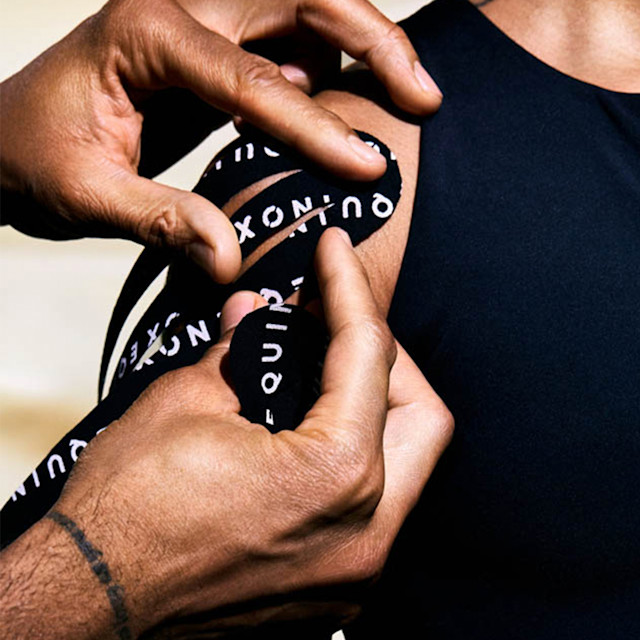You’ll recover more quickly if you make it a combo.
Even if you’re already setting aside rest days that revive both your muscles and your nervous system, you’d be smart to make those days off a twofer. Recovery pairings allow you to double down on regeneration so you can return to the gym with unstoppable energy.
“Recovery is where the magic happens,” says James Gu, Senior Director of The Spa at Equinox. “You don’t get stronger, bigger, or faster when you’re training. All of those benefits from exercise happen during the recovery process.”
The truth is: Taking a “no days off” mentality is a surefire way to stunt your progress, increase your chances of injury, and exhaust you both physically and mentally. “When you work out, you’re breaking down your body; during recovery your body repairs itself in a way that makes it better adapted to face the stresses it’s just been through,” Gu explains. “Actively participating in recovery focused activities like getting a massage or contrast therapy allow your body to heal faster so that you can train harder, sooner.”
So when your next day off comes along, consider taking a page from Gu’s training manual and opt for double the recovery. Below, he walks you through his four favorite recovery pairings that go together like cardio and endorphins. Ready to relax?
1. Meditation plus compression therapy
Ring stress from your body and mind with Gu’s first relaxation combo special. “Mediation will transition you from a sympathetic state to a parasympathetic or ‘at rest’ state. This is where you need to be in order for your body to be able to start rebuilding,” he says. Meanwhile, compression therapy — which requires recovery devices like the Hyperice Normatec Go — will boost your circulation and speed up your recovery. “[This] mimics your body’s natural muscle pumping action which will help increase drainage as well as increase circulation. It also just feels really good,” says Gu.
2. Red light and near-infrared therapy plus percussion therapy
“Red light/NIR therapy increases circulation, which in turn increases the amount of fresh oxygenated blood reaching your muscles — a crucial part of the recovery process,” says Gu. In addition, it increases cellular energy production and reduces pain, both of which will help you recover faster.”
Using the Hyperice Hypervolt, or another percussion therapy tool, will also help get your blood flowing, especially if you specifically target the muscles that are sore. “On higher speed settings, it will also stimulate the vagus nerve, which triggers your body to transition into that parasympathetic state,” says Gu.
3. Heat exposure plus cold exposure
Also known as “contrast therapy,” heat and cold exposure is a time-tested recovery modality beloved by elite athletes. Like some of Gu’s other favorites, contrast therapy boosts your blood flow to help your muscles mend more quickly. “Cold exposure constricts your blood vessels and sends your blood out of your extremities and into your core. Heat exposure has the opposite effect and opens your blood vessels and brings fresh blood into your extremities,” he explains.
Beyond that, surprising yourself with different temperatures can also help your body reboot its other systems. “There is also the huge added benefit of increasing heat and cold shock proteins which improve your resistance to stress, supports the immune system, regenerates cells, and protects your brain and nervous system,” Gu says.
It’s easy to try contrast therapy at home. Simply switch between a hot and cold shower or use the gym’s sauna or steam room and pair that with an ice-cold locker room shower. “My personal favorite is alternating between a cold plunge and heated whirlpool, spending about two minutes in each for five rounds,” says Gu.
4. Steam and sauna plus stretching
Sometimes, a restorative hot yoga class or hopping in a sauna pre-stretch is the best way to spend your day out of the weight room. “The heat will help relax your muscles allowing you to stretch further,” says Gu. “Michele Olson, PhD, a principal researcher at the Auburn University Montgomery Kinesiology Laboratory, did a study where participants sat in a sauna for 15 minutes before performing their stretches. They saw a 205% increase in flexibility versus performing those same stretches without the sauna.”
